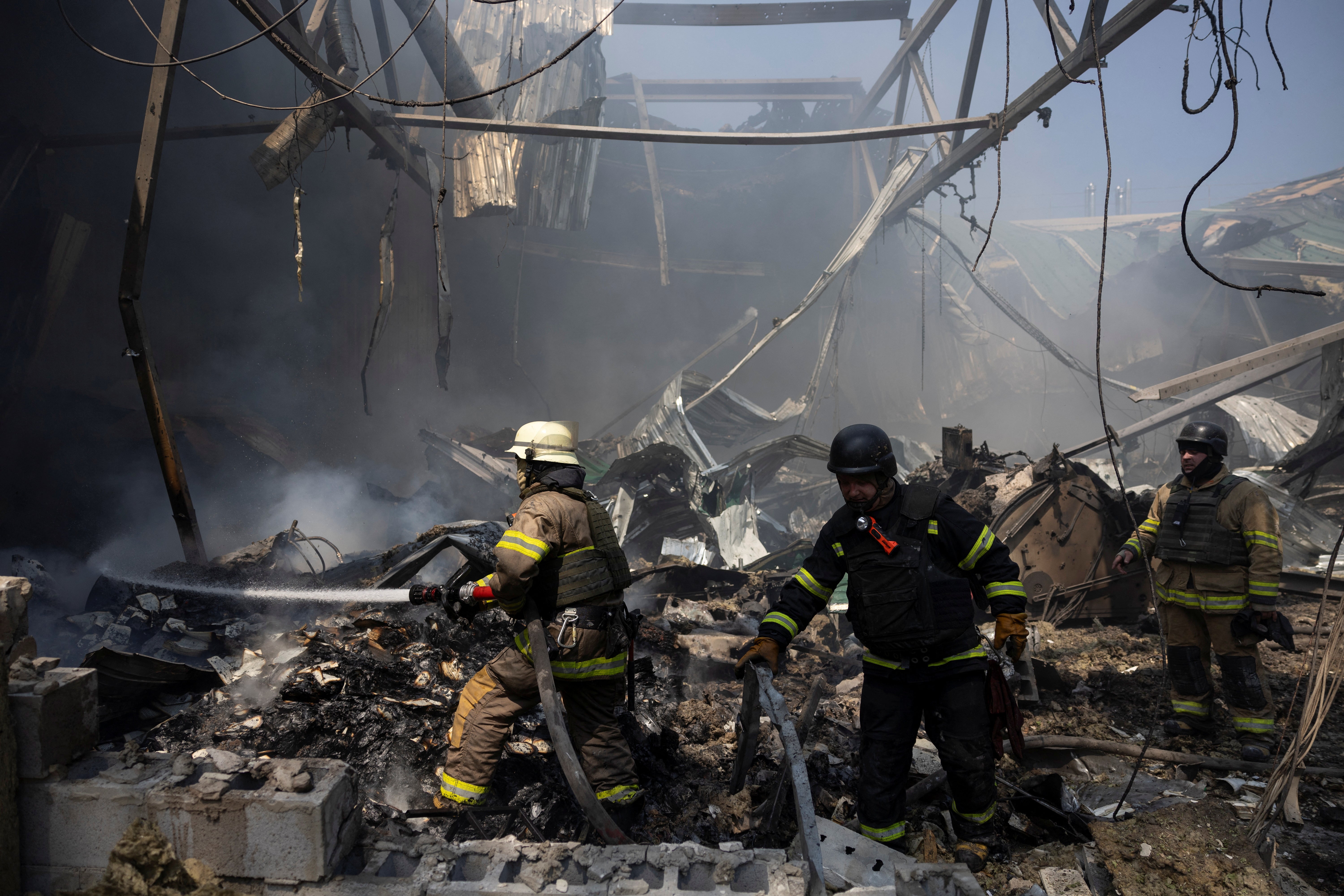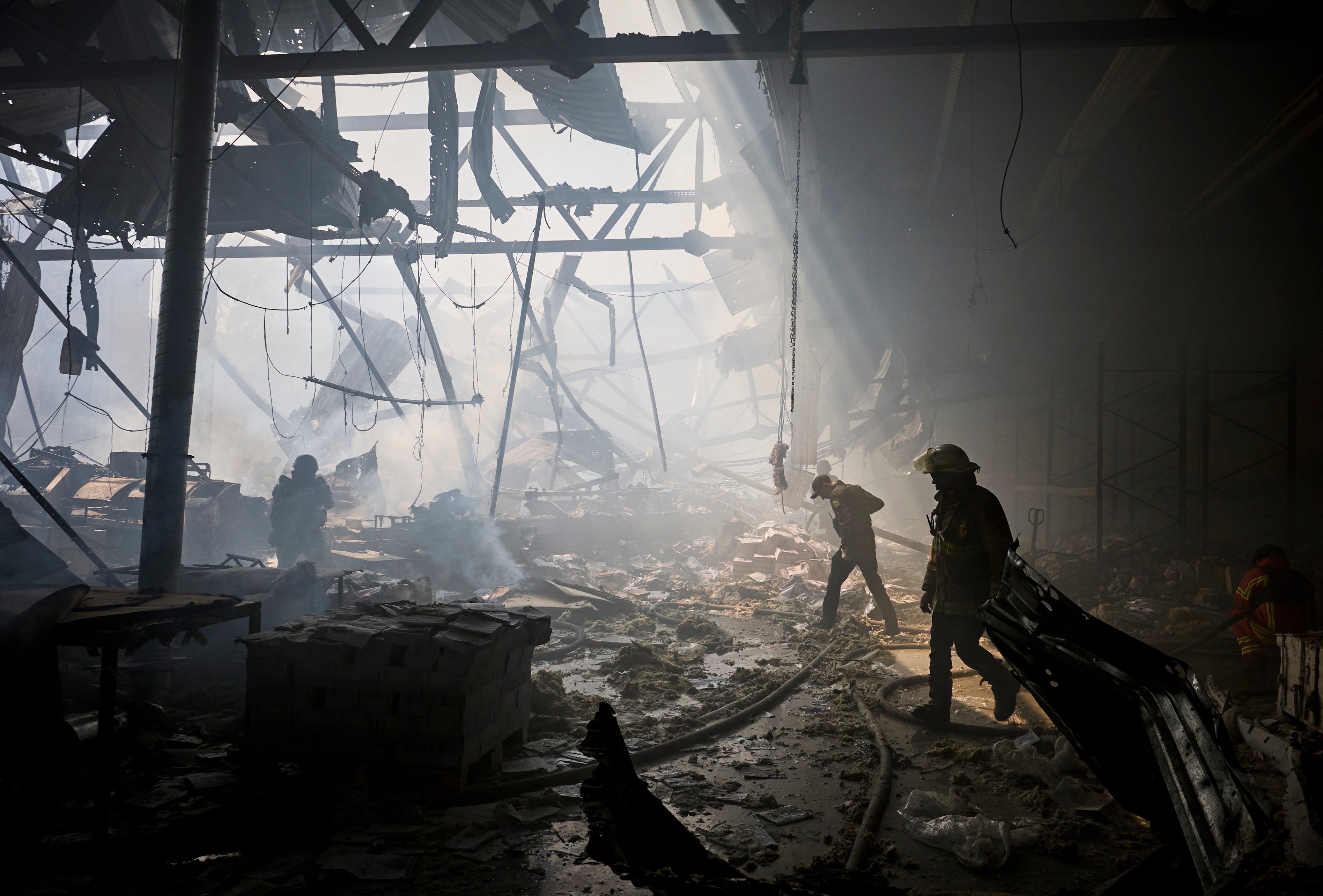At least seven killed in Russian strike on Kharkiv as Zelensky pleads for more weapons
Ukrainian President Volodymyr Zelensky blamed Kyiv’s Western allies for the deadly strike on Kharkiv following delayed military aid

Your support helps us to tell the story
From reproductive rights to climate change to Big Tech, The Independent is on the ground when the story is developing. Whether it's investigating the financials of Elon Musk's pro-Trump PAC or producing our latest documentary, 'The A Word', which shines a light on the American women fighting for reproductive rights, we know how important it is to parse out the facts from the messaging.
At such a critical moment in US history, we need reporters on the ground. Your donation allows us to keep sending journalists to speak to both sides of the story.
The Independent is trusted by Americans across the entire political spectrum. And unlike many other quality news outlets, we choose not to lock Americans out of our reporting and analysis with paywalls. We believe quality journalism should be available to everyone, paid for by those who can afford it.
Your support makes all the difference.At least seven people have been killed and two dozen injured after Russia launched a second massive airstrike on Ukraine’s Kharkiv region in as many days.
The attack came after a Russian glide bomb, a deadly explosive nicknamed the “building destroyer” by pro-Kremlin military bloggers, obliterated a cafe and injured 10 people in the middle of the day on Wednesday.
Moscow’s forces are increasingly hammering the region’s capital, a city home to some 1.3 million people, as they attempt to press a ground assault on the wider area and stretch Ukrainian defences on the eastern front.
Authorities said Russia fired about 15 missiles on the cities of Kharkiv and neighbouring Lubotyn on Thursday, targeting mostly transport infrastructure and a printer in the region’s capital.
Images showed smoke pouring out of the Faktor Druk printing house, whose roof was torn open, as exhausted rescue workers brought bodies in bags out of the building amid the flames. At least 50 people were believed to be inside at the time of the strike.
Speaking at the scene, regional governor Oleh Syniehubov described it as an “absolutely civilian” location. “There are no military facilities either here or nearby,” he said.

Ukrainian president Volodymyr Zelensky blamed the strike on the lack of anti-aircraft defences supplied by Kyiv’s main allies, as well as their insistence that Ukraine not use the provided weapons to strike inside Russian territory for fear of provoking Moscow.
The strikes were launched using S-300 missile systems from the Russian region of neighbouring Belgorod, military officials said. Because of how close it is to Kharkiv, just 50 miles, air raid sirens only sound after the missile has already hit. Ukrainian officials say they know the locations of the launch sites and that they could destroy them if their Western backers allowed it.
“Russian terrorists take advantage of the fact that Ukraine still lacks sufficient anti-aircraft defence and a reliable ability to destroy terrorist launchers exactly where they are located – near our borders,” Mr Zelensky said.
“And this weakness is not our weakness, but the world’s, which for the third year already does not dare to treat the terrorists exactly as they deserve it.”
Russia’s renewed assault on Kharkiv has, for many in the region, made it feel like the war has started all over again, and the destruction of the city’s printing press, where many books detailing the first stages of the war were being published, was a stark reminder of the seemingly never-ending nature of Russia’s destruction of the region.
One of the books produced at the printing press was the diary of Ukrainian children’s writer Volodymyr Vakulenko, who was killed in his hometown of Izyum during Russia’s initial occupation of the Kharkiv region. The diary was found by Ukrainian novelist Victoria Amelina, who herself was then killed in a Russian airstrike on a pizza restaurant in Kramatorsk, a two-hour drive south, last June. The printing press in Kharkiv, with dozens inside, was yet another victim.
Meanwhile, Ukrainian military chief Oleksandr Syrskyi said that the most intense battles across the frontline were taking place in Kupyansk in the southeastern corner of the Kharkiv region.
He added that Russian forces were suffering significant losses in their offensives north of Kharkiv city, which they launched on 10 May.
“After the first minor successes in the course of offensive fighting in the Kharkiv region, the opponent was completely engaged in the street fighting … and suffered very high losses,” he said.
Join our commenting forum
Join thought-provoking conversations, follow other Independent readers and see their replies
Comments